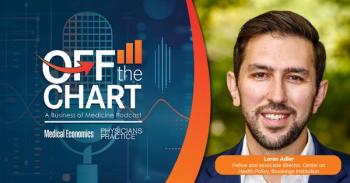
Positioning in a chaotic stock market with key sectors
Stock market turbulence may increase in the coming weeks. Yet investors shouldn’t be looking around for parachutes marked “sell.”
Stock market turbulence may increase in the coming weeks, as it has in early fall in recent years. This time around, bumps from potentially rising volatility could be especially rough from existing market chaos.
Yet investors shouldn’t be looking around for parachutes marked “sell.” Instead, they should strap in and consider buying opportunities still remaining from this year’s market decline—a path easily accessible to individuals with high disposable incomes, such as physicians.
After probably
But even if this happens, long-term trends would still probably drive major indexes well above current levels over the next 12 to 24 months. Historically, varying versions of this rebound dynamic have played out after steep declines in the first half of the year.
Fear of “R” Word
Talking heads and high-profile advisors predicting imminent recession are spreading fear without reason, in the absence of any definitive signs of economic shrinkage. The economy is clearly slowing, but from the breakneck speed it achieved coming out of the pandemic, propelled by artificially high pent-up demand. Naturally, this kind of growth is unsustainable.
Investment conditions may appear dunning now, but this shouldn’t come as a surprise. Government policies around the world created chaos and economic trauma from shutdowns, so why wouldn’t there be chaos after re-opening?
Yet contrary to popular belief, the economy isn’t a consistent market indicator. The problem with making investment decisions based purely or largely on the economy is that markets (stocks and bonds) are forward looking. But economic data is always backward looking, and thus may not predict market behavior.
Markets and the economy are cousins that speak the same language, agree in the long run, often disagree in the short term and only get together to chat periodically. So, while the economy has a big influence on financial markets, relying on it too heavily for market guidance can be faulty.
No Place Like Home
In the current global conditions, investors will probably do best by keeping investments domestic, as U.S. markets are still the best neighborhood in a gritty global city. Europe has a lot of problems affecting investment conditions: inflation higher than in the U.S. (the annual rate is projected in the UK to rise into the teens before year’s end), a lack of population growth continent-wide and the war in Ukraine.
China is increasingly problematic. Just say “no” to investing in an economy that’s based heavily on real estate (owned by the government), increasingly burdened with commercial debt, undergoing Covid lockdown after lockdown (the latest in the large city of Chengdu, starting early this month) and demographically destined for long-term decline from
By contrast, the U.S. still has fairly friendly regulations and culture of entrepreneurship. Our globally high immigration rate
Market sentiment among individual investors in the U.S. has been fairly pessimistic in recent months. Much of this stems from expectations of negative market impacts from the sad state of the world and the nation today. But the market has come roaring back from early-in-the-year
Professional investors use the market sentiments of individual investors as a contrarian indicator—meaning that if the average investor thinks the market will perform poorly, it will probably do quite well. This ironic calculus relies on the belief that individual investors are likely to be wrong, and their investing record bears this out: As a rule, they tend to invest, and hold back or sell, when they shouldn’t.
Key Sectors
With all this in mind, how should equity investors position in this confusing market? Some observations on potentially advantageous sectors:
·Consumer discretionary, materials and technology have excellent near-term prospects. According to historical data on post-dip performance from Fidelity Investments and MAPsignals, consumer discretionary is highly likely to outperform in the second half of this year. Given the unusual events of the past couple years, the pattern might not repeat precisely this time around. But odds are that consumer discretionary should do quite well for the rest of 2022, regardless. Holdings of Consumer Discretionary Select Sector SPDR Fund (XLY), the largest and most liquid exchange-traded fund in this sector, include some familiar names: Amazon, Tesla, Home Depot, McDonald’s, Nike and Starbucks.
·Based on the same data, materials and technology are the second and third most likely outperforming sectors, respectively, for the rest of this year.
Materials companies are those involved in the discovery, removal and processing of raw materials. Materials firms are among the holdings of Global X U.S. Infrastructure Development ETF (PAVE), one of only four funds or ETFs (among the more than 11,800 available) to have beaten the S&P 500 in total return each year since 2019, through July 2022. (The other three are: Distillate U.S. Fundamental Stability & Value ETF (DSTL), Dividend Performers ETF (IPDP)—managed by my firm, it became an ETF this year after starting as a mutual fund—and Payson Total Return Fund (PBFDX).)
Regarding tech stocks, though the NASDAQ has bounced back substantially from a disastrous start this year, some worthy companies still have relatively low prices. The quality to look for here is what I call
·Healthcare and financials should also be expected to do well in the coming months. Healthcare is benefitting from fairly friendly government regulation and the increasing care needs of aging baby-boomers. Among financials, regional banks are particularly attractive right now, as rising rates help their bottom lines. These banks—examples can be found in SPDR S&P Regional Banking ETF (KRE)—have far less vulnerability to currency and trading risks, compared with large banks.
·Another sector with good near-term prospects is energy. Energy stocks have been on a wild ride this year from high post-pandemic demand, and the sector may have multi-year legs. But performance can turn on a dime, so investors should keep a cautious eye on their holdings; energy is by no means set-it-and-forget-it.
By making judicious investments in sectors likely to growth over the next year or two, investors can ride out turbulence with more comfort. The ride will always be too bumpy for those with no tolerance for volatility; they shouldn’t be investing in stocks in the first place.
But for investors who accept the idea that jagged lines are no cause for concern, provided that the long-term trend is upward, a bumpy ride shouldn’t be a problem.
Dave Sheaff Gilreath, CFP®, is a 40-year veteran of the financial services industry. He is a partner and chief investment officer of Sheaff Brock Investment Advisors, LLC, a portfolio management firm for individual investors, and Innovative Portfolios, LLC, an institutional money management firm. Based in Indianapolis, the firms manage about $1.4 billion in assets nationwide.
Newsletter
Stay informed and empowered with Medical Economics enewsletter, delivering expert insights, financial strategies, practice management tips and technology trends — tailored for today’s physicians.

















